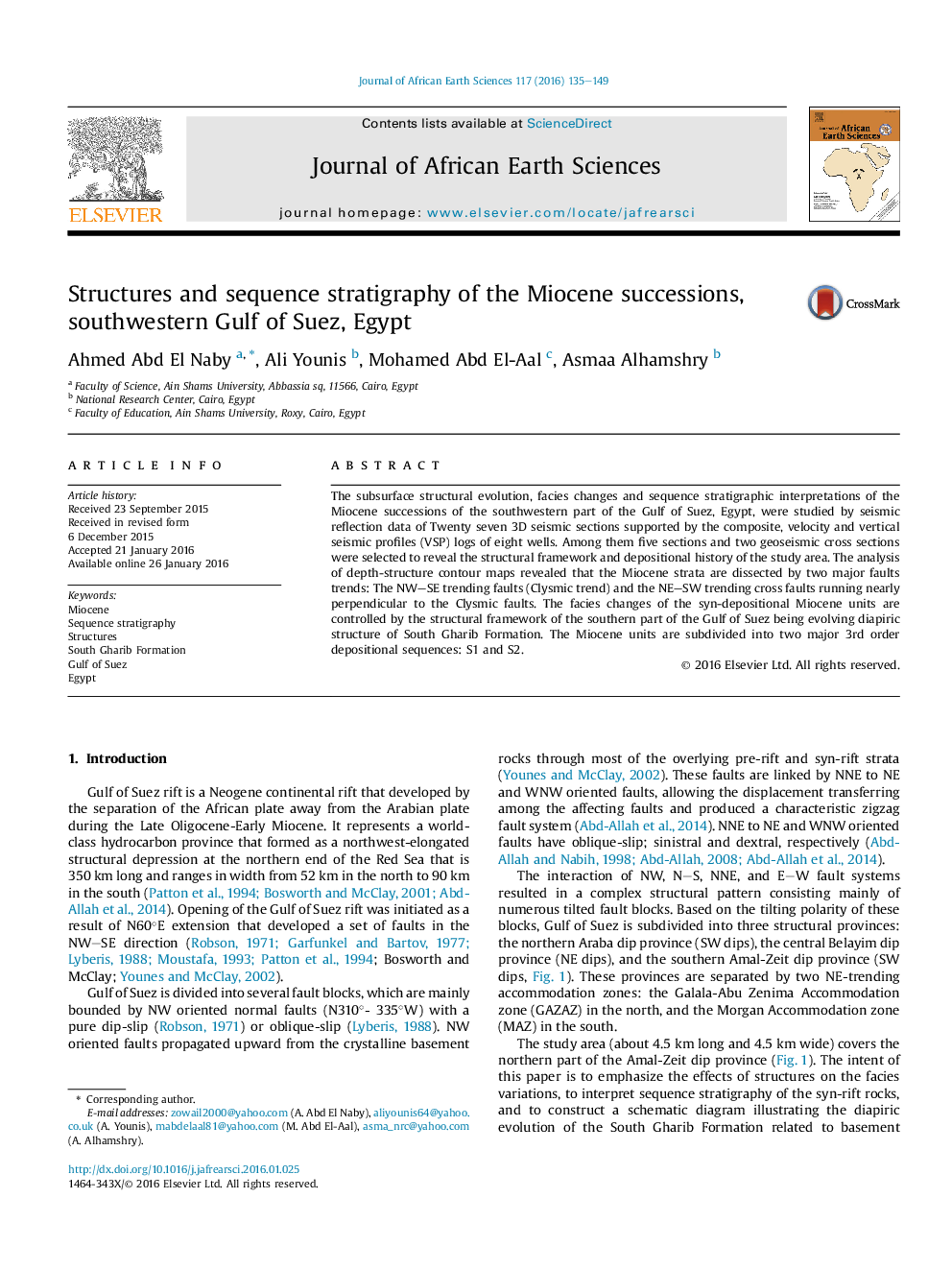| Article ID | Journal | Published Year | Pages | File Type |
|---|---|---|---|---|
| 4728320 | Journal of African Earth Sciences | 2016 | 15 Pages |
The subsurface structural evolution, facies changes and sequence stratigraphic interpretations of the Miocene successions of the southwestern part of the Gulf of Suez, Egypt, were studied by seismic reflection data of Twenty seven 3D seismic sections supported by the composite, velocity and vertical seismic profiles (VSP) logs of eight wells. Among them five sections and two geoseismic cross sections were selected to reveal the structural framework and depositional history of the study area. The analysis of depth-structure contour maps revealed that the Miocene strata are dissected by two major faults trends: The NW–SE trending faults (Clysmic trend) and the NE–SW trending cross faults running nearly perpendicular to the Clysmic faults. The facies changes of the syn-depositional Miocene units are controlled by the structural framework of the southern part of the Gulf of Suez being evolving diapiric structure of South Gharib Formation. The Miocene units are subdivided into two major 3rd order depositional sequences: S1 and S2.
